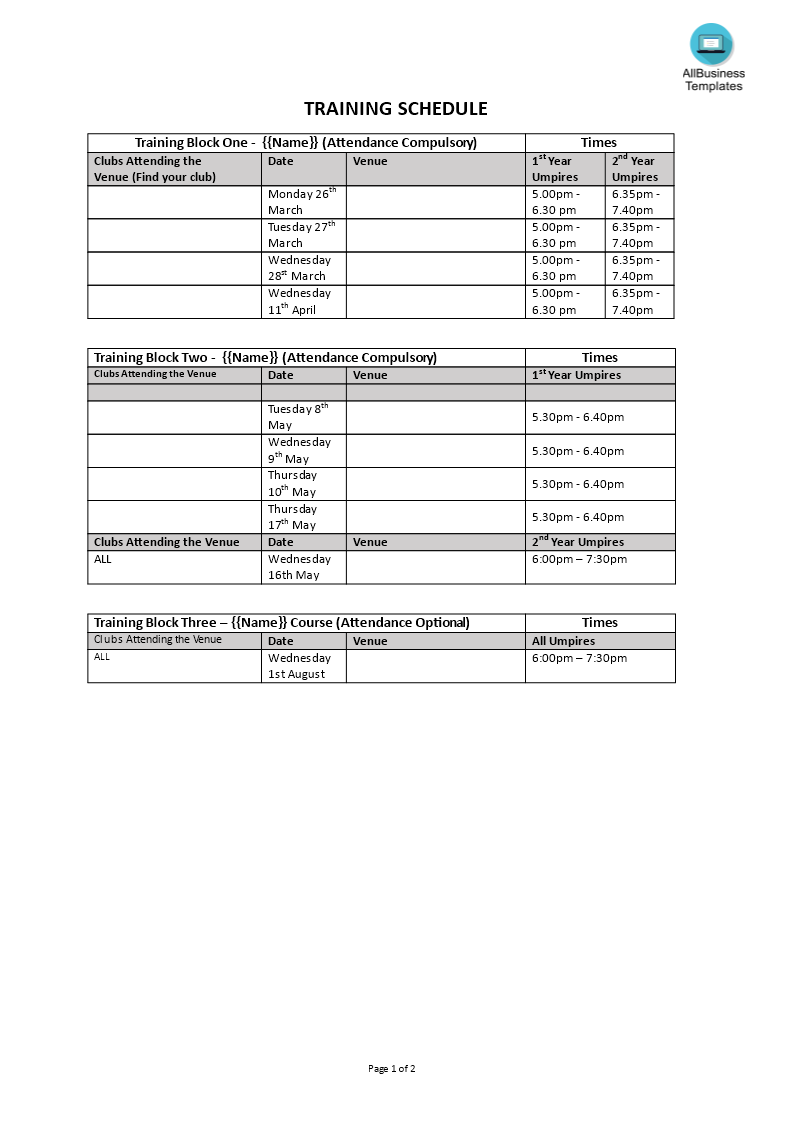Training Plan template

I-Save, punan ang mga blanko, i-printa, Tapos na!
How to create a training schedule or plan? Creating a three-year training plan requires careful planning and consideration of your goals, progression, and the specific elements of your training program.
Mga magagamit na premium na format ng file:
.docx- Itong dokumento ay sertipikado ng isang Propesyonal
- 100% pwedeng i-customize
Life Buhay planning pagpaplano schedule planner plan how many weeks in a school year? year round school schedule shool schedule year 1 year medical school schedule 2 year old school schedule school plan year plan year planning yearly plan
How to create a training plan?
Creating a three-year training schedule requires careful planning and consideration of your goals, progression, and the specific elements of your training program. Whether you're planning for athletic training, professional development, or any other form of skill enhancement, here's a general guide to help you create a comprehensive three-year training schedule:
Year 1: Foundation and Basics
Define Goals:
Clearly outline your long-term goals for the three-year period. These goals will guide the structure of your training program.
Assessment:
Evaluate your current skill level, fitness, or knowledge base. Identify strengths and weaknesses to tailor your training plan accordingly.
Develop a Curriculum:
Break down your overarching goals into smaller, achievable milestones for the first year. Create a curriculum that focuses on building a strong foundation.
Skill Building:
Concentrate on fundamental skills and knowledge. This may involve basic courses, introductory workouts, or foundational learning.
Establish Routine:
Develop a consistent training routine. This may involve setting aside specific days for training, establishing a workout schedule, or allocating time for learning new skills.
Year 2: Progression and Specialization
Review Year 1:
Assess your progress from the first year. Identify areas of improvement and any adjustments needed for the next phase.
Set Intermediate Goals:
Define intermediate goals that build on the foundation established in the first year. These goals should be more challenging and specific.
Specialization:
Begin to specialize in specific areas relevant to your goals. This could involve advanced training programs, specialized courses, or more focused skill development.
Diversify Training:
Introduce variety in your training routine to prevent plateaus and maintain engagement. This might include cross-training, exploring advanced topics, or incorporating new methods.
Evaluate and Adjust:
Regularly assess your performance and make necessary adjustments to your training plan. This could involve increasing intensity, modifying routines, or addressing weaknesses.
Year 3: Mastery and Refinement
Finalize Goals:
Refine your long-term goals based on the progress made in the first two years. These goals should represent a higher level of mastery.
Advanced Training:
Implement advanced training methods and practices. This could involve intense workouts, specialized courses, or mentorship opportunities.
Skill Mastery:
Focus on mastering the skills or knowledge areas you've been developing. Fine-tune your techniques and strive for excellence.
Performance Evaluation:
Regularly evaluate your performance against the established goals. This may involve self-assessment, feedback from mentors, or performance metrics.
Prepare for the Next Steps:
Consider what comes next after the three-year training period. Whether it's further specialization, entering competitions, or applying newly acquired skills in a professional setting, plan for the future.
General Tips:
- Consistency is Key: Stick to your training schedule consistently over the three years.
- Periodic Assessments: Conduct regular assessments to track progress and identify areas for improvement.
- Flexibility: Be flexible and open to adjusting your plan based on unexpected challenges or opportunities.
- Rest and Recovery: Incorporate adequate rest and recovery into your training plan to prevent burnout and reduce the risk of injuries.
- Seek Expert Guidance: Consider consulting with professionals or mentors in your field for guidance and feedback.
Remember that this is a general framework, and your specific training schedule will depend on your individual goals, the nature of your training, and any external factors influencing your plan.
Download this Training schedule here for your reference!
DISCLAIMER
Wala sa 'site' na ito ang dapat ituring na legal na payo at walang abogado-kliyenteng relasyon na itinatag.
Mag-iwan ng tugon. Kung mayroon kang anumang mga katanungan o mga komento, maaari mong ilagay ang mga ito sa ibaba.
